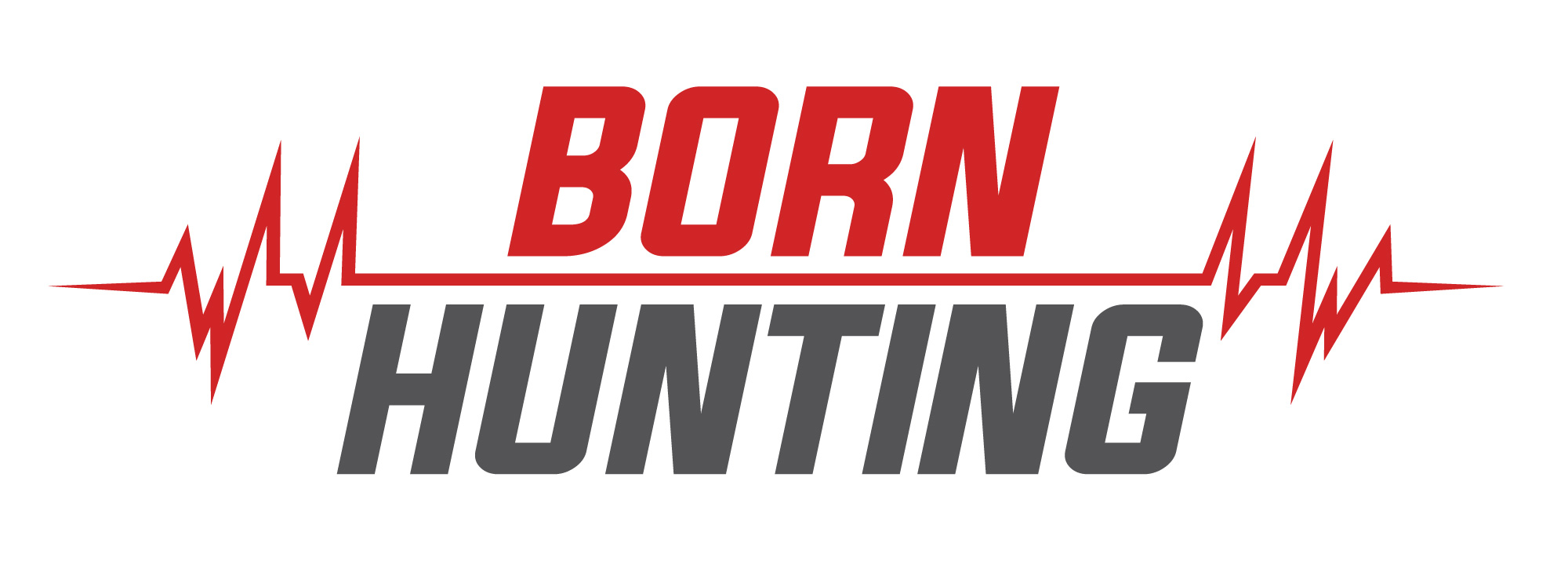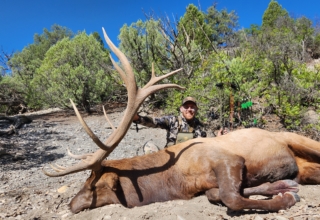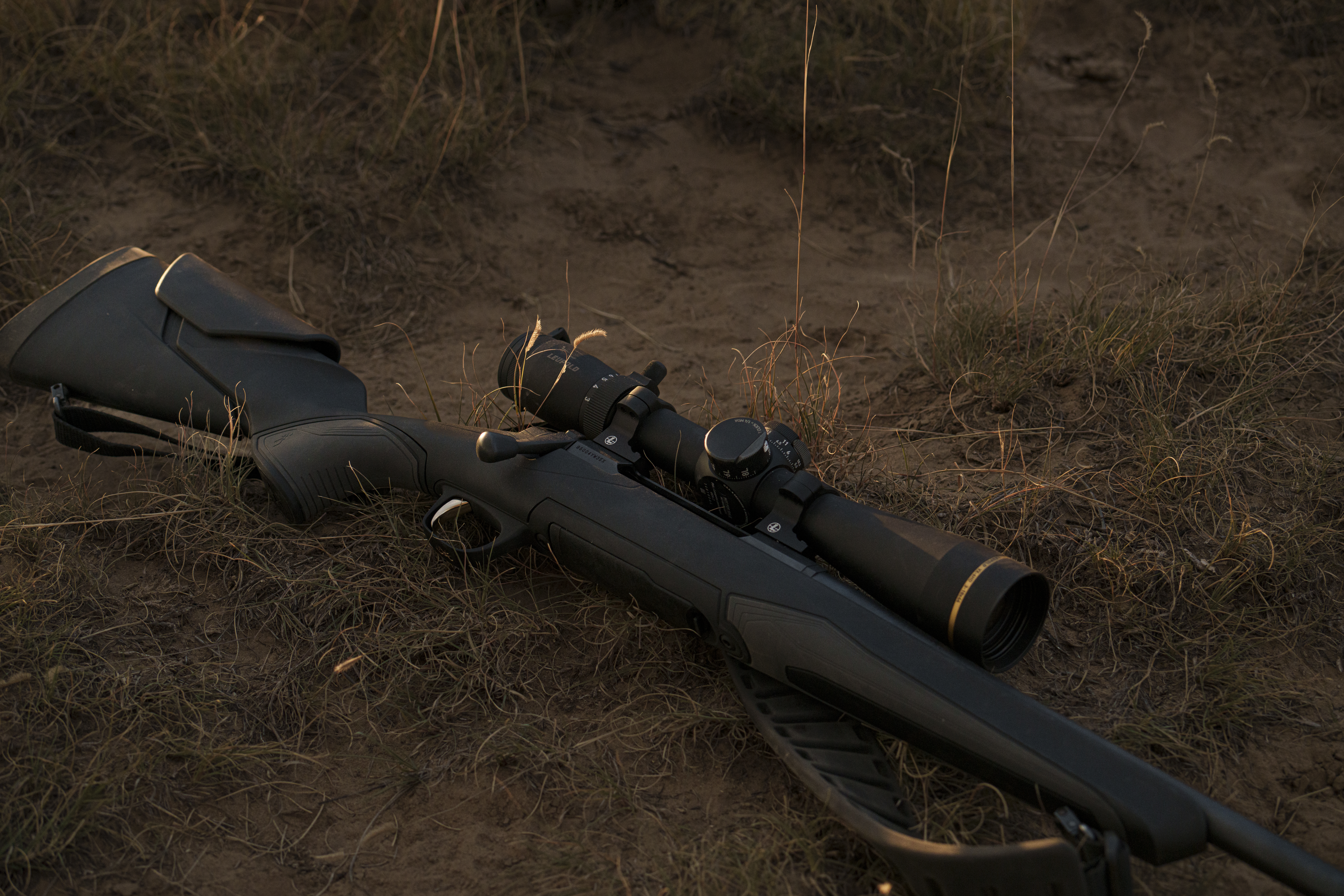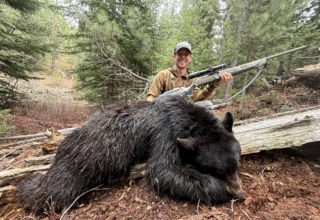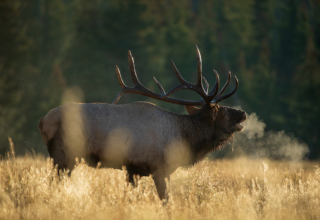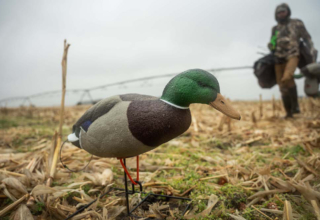Bowhunting elk is a rollercoaster ride, and this hunt in New Mexico’s pine forests proved one full of emotion and pure joy.
by Mark Sidelinger
The first days of archery elk season in the Land of Enchantment carry a unique magic—crisp mornings that hint at the coming autumn, and afternoons that are warm enough to remind you that summer still clings to the land. There is nothing quite like bowhunting elk.
Southern New Mexico is a place of sweeping ridges, shadowed draws, and stretches of Ponderosa pines that seem to whisper with the ghosts of a thousand hunts past. It was here that my own story unfolded, one that tested patience, resolve, and reverence for the wild.
Day One – Anticipation and Frustration
The morning broke calm and clear, the kind of air that wakes the lungs and makes every sound sharper. As we moved into position, my pulse quickened with that familiar blend of excitement and nerves. We hadn’t gone far before we encountered a group of elk—bulls bugling their dominance, cows tending to calves, the whole spectacle of wild majesty playing out in front of us. My heart pounded as I gauged the wind, adjusted my position, and prepared for what could be the perfect opening-day encounter.
But as often happens in the mountains, things took a turn. Two other hunters, unaware or uncaring, walked directly into the scene. Their intrusion shattered the fragile tension, pushing the elk and leaving me standing with my bow in hand. Encounters like that remind you that hunting public land requires not just skill, but patience with other people.
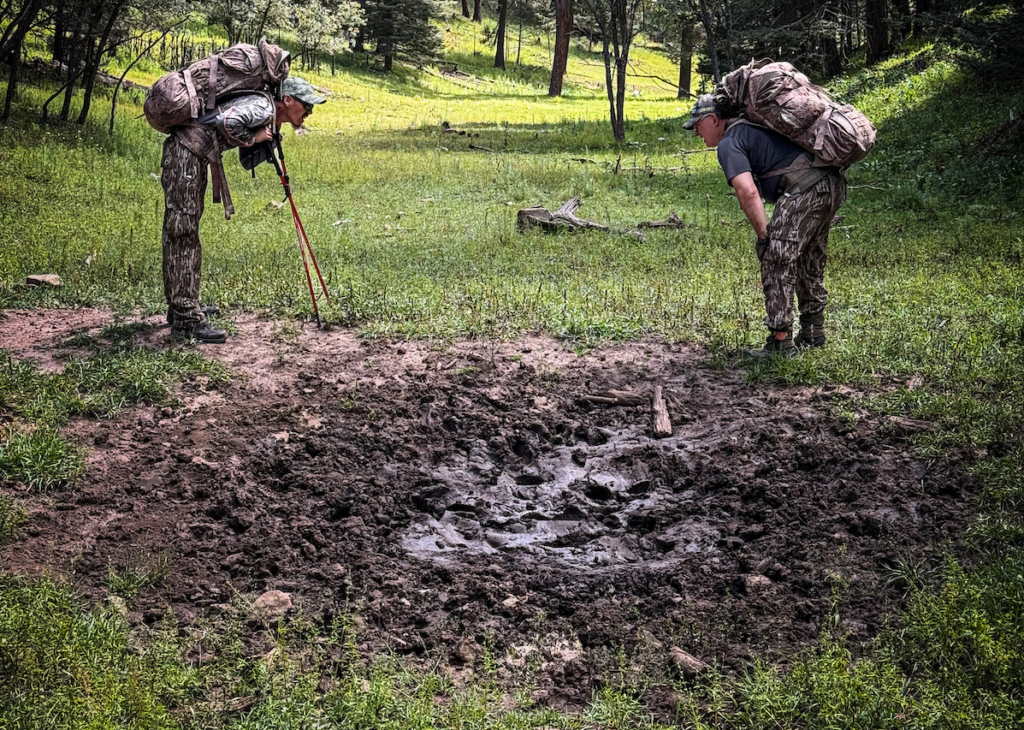
By evening, we shifted our strategy. We set up over a tank, a watering hole that had shown steady elk activity. It was a promising setup, and as the sun lowered toward the horizon, the anticipation grew. Every sound—the crackle of brush, the faint rustle of wings overhead—seemed magnified. We all knew that “witching hour,” that magical window when elk often come to water, was approaching.
Then, out of nowhere, the muffled drone of engines echoed down a closed road. Two UTVs rolled into view, blatantly trespassing. The intrusion not only spoiled the setup but struck a nerve. We had put in the work, hiked the miles, followed the rules, and just like that, careless lawbreakers cut across our efforts. We packed it in, shaking our heads in disbelief. Day one ended with disappointment.
Day Two – Into the Ponderosas
The next morning, the air was even cooler, the kind that makes your breath fog as you hike. We pushed into a new area, climbing steep hills until sweat slicked our backs despite the chill. The country opened into stands of towering Ponderosa Pines, their vanilla-scented bark warm under the first light. The setting alone was enough to stir hope.
Soon we began to hear elk. Their bugles echoed like trumpets across the timber. One bull in particular caught our attention. His voice rolled from a ridge about a quarter mile away, intense and challenging. We huddled briefly, weighing the options. Waiting for elk to drift into our setup had a definite appeal, but the bull’s commanding voice on the far ridge lit a fire in us. We chose aggression. Rather than sit and hope, we would go to him.
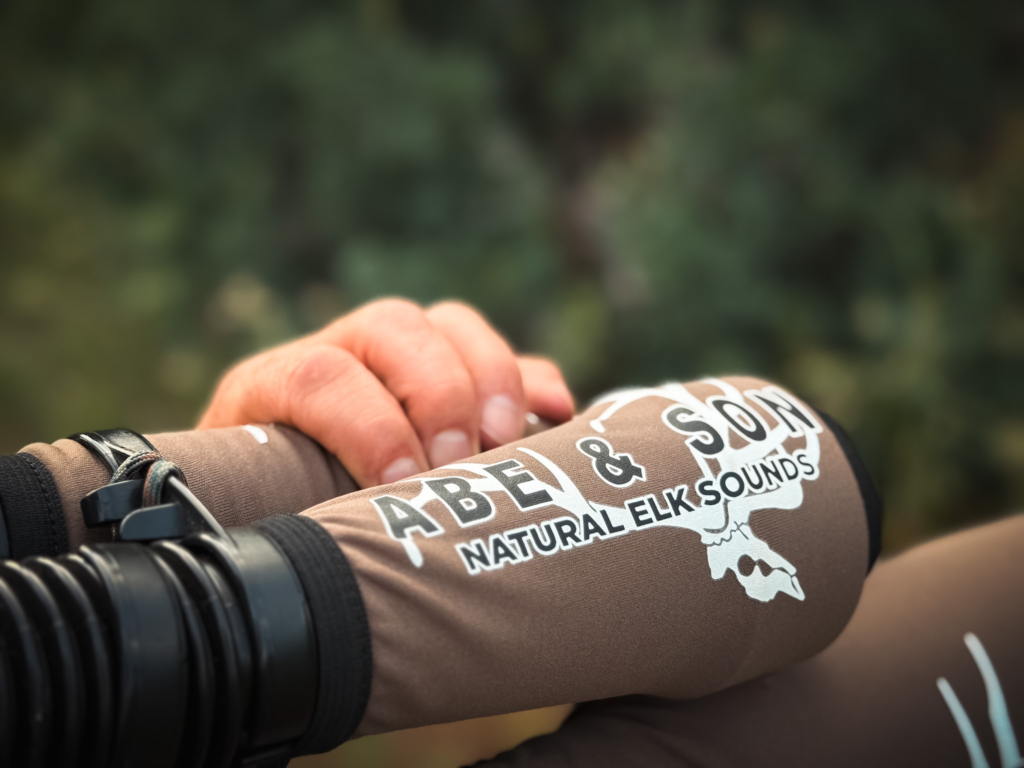
Ralph Ramos, my friend and guide, began working his magic. His bugles rang out with a confidence and sharpness that demanded attention. The bull answered back instantly, but when Ralph mixed in cow and calf calls, the response was muted. The conversation between man and beast continued, and this bull was spoiling for a fight, not a romance. That told us everything we needed to know.
The Standoff
We pushed closer, careful with every step, using folds in the terrain and pockets of timber to mask our approach. Ralph escalated the intensity of his calls. Ralph used deep, guttural bugles, mixed with the sharp sound of antlers raking trees. The clash of horn on bark sent shivers up my spine. I could feel the energy shift.
Across the meadow, the bull responded. His voice carried an edge of fury, and then, to our amazement, he began to close the distance. Bugling and raking, Ralph pulled him like a magnet. Bowhunting elk can be frustrating one minute and so rewarding the next. The bull broke from cover, striding across an open meadow, his antlers flashing in the sunlight. He was magnificent! My body responded instinctively, and I crouched lower, my release attached to the bowstring.
At about 100 yards, the bull threw his head back and bugled, the sound rattling my ribs. He was close enough now that every detail stood out: the steam rising from his nostrils, the rhythm of his gait, the wild fire in his eyes.
Then came the moment of tension. He stopped, directly downwind from me. My heart sank. The swirling currents carried my scent right to him. I thought it was over, that in the next second he would whirl and vanish into the timber.
But fate smiled. After a pause that seemed eternal, he resumed his advance. The bull was driven by fury and more interested in the rival bull he imagined than in the faint trace of danger he’d caught.
The Shot
The bull angled toward Ralph’s position, about 25 yards away, and Ralph wisely went silent, letting the animal’s momentum carry it closer. I steadied myself, muscles coiled as I began to draw. At 35 yards, the bull made the fatal mistake of taking one more step.
I loosed the arrow. In an instant, it was gone, flying true. I lost sight of the shaft’s trajectory, but the sound and the bull’s reaction told me everything. I had made a solid shot.
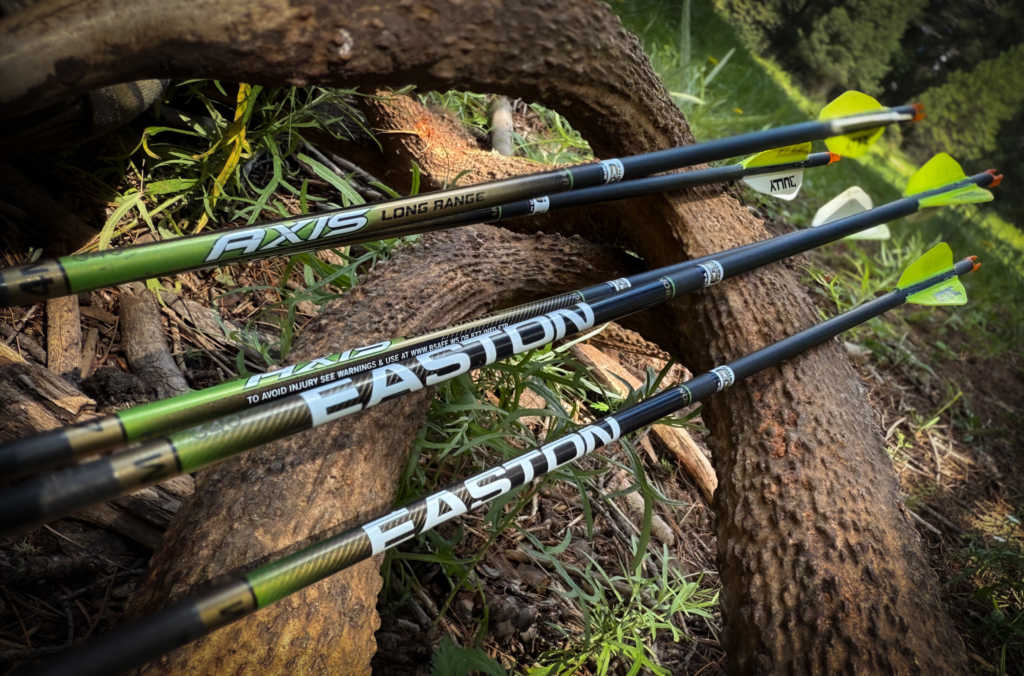
The bull crashed into the timber, the sound of breaking branches fading quickly, followed by labored breathing. Then silence. We all exchanged glances, hearts pounding. Relief and fear battled in my chest.
For The Full Field Test on Easton’s Axis 4MM Long Range, CLICK HERE!
The Wait
Even though it felt like a perfect shot, discipline held us back. Elk are big creatures and bringing an elk down with a bow is a challenging task. We waited a full hour before moving, giving the animal time. During that span, my mind replayed the moment of release again and again. Had I hit where I aimed? Would we find him quickly? Doubt is part of every bowhunter’s journey.
Finally, we began tracking. The soil showed heavy tracks, and soon we found the first specks of blood. My heart lifted, but the trail was not easy. At one point, we lost it entirely in a stretch of rock. I stood back at the last visible blood, watching as Ralph and Jose, our cameraman.
Then came Jose’s voice. “The bull’s down.” Relief washed over me so vigorously that it nearly buckled my knees.
The Harvest
Walking up to the bull was an emotional experience I’ll never forget. He was bigger, older, and more majestic than I had even dared hope. His antlers told the story of years on the mountain, battles won and lost, survival against predators and storms alike.
As I laid a hand on his side, gratitude welled in my chest. Gratitude for the land, the animal, and my companions. This was the first season without my younger brother, who had passed away just that summer. Usually, he would have been the first to hear my hunting stories, the first to share in the triumph and the laughter.
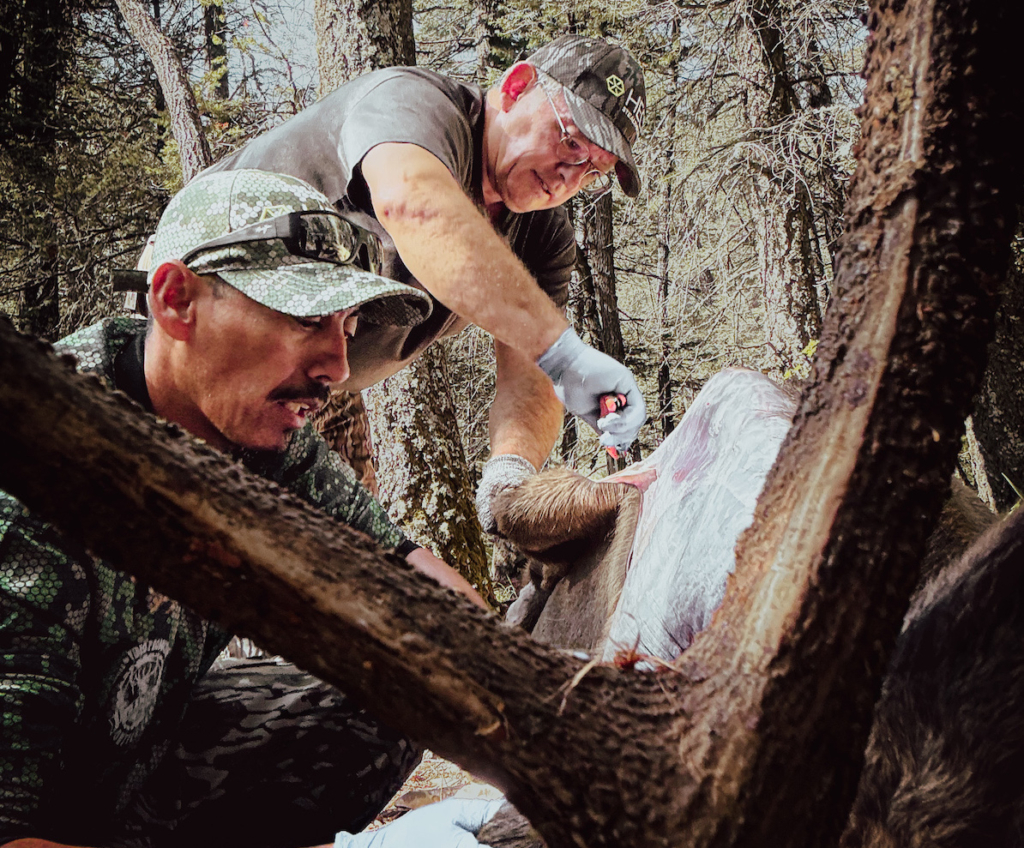
I felt his absence like a weight, but also his presence like a hand on my shoulder. When I called my older brother later to tell the story, we both felt it. We knew that somehow, my arrow had been guided. That this harvest was not mine alone, but a gift shared across the veil.
Reflection
Bowhunting elk is about more than the kill. It’s about the preparation, the setbacks, the perseverance, and the emotions that come rushing in when success finally arrives. It’s about sunrises in the Ponderosas, the sound of a bugle splitting the still air, the companionship of those who share the journey, and the quiet conversations you have with yourself and with those who are gone.
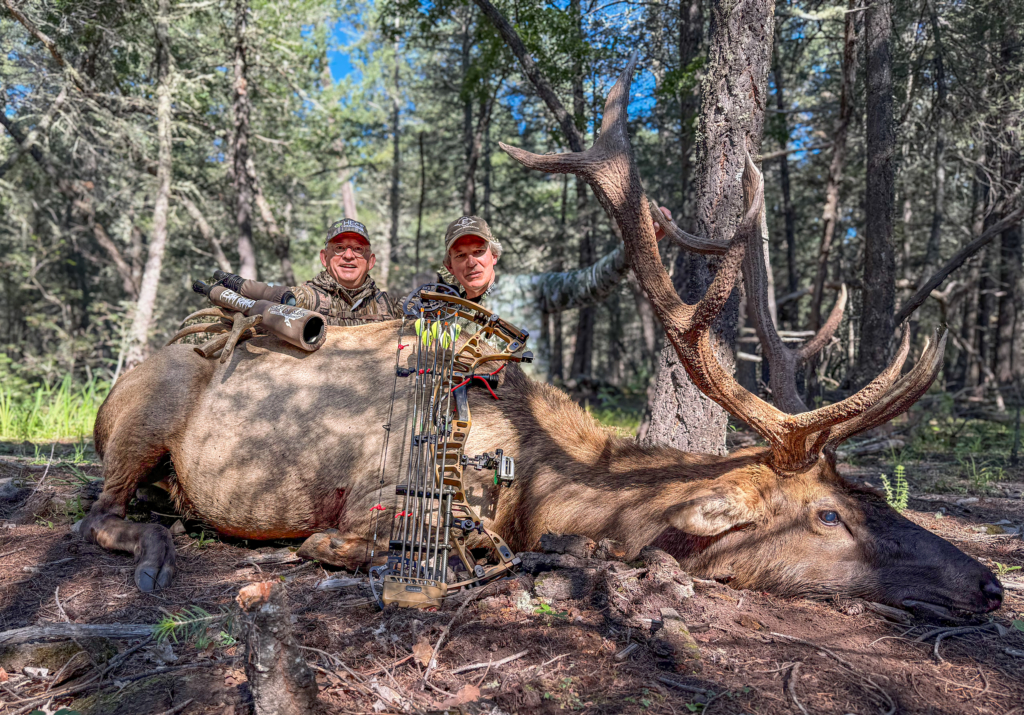
That bull in Unit 34 was more than a trophy. He was a culmination of effort, patience, and memory. His antlers will hang on my wall, but his story will live forever in my heart, tied not only to the land but to the bond I share with my brothers—one here and one gone, but one never forgotten.
